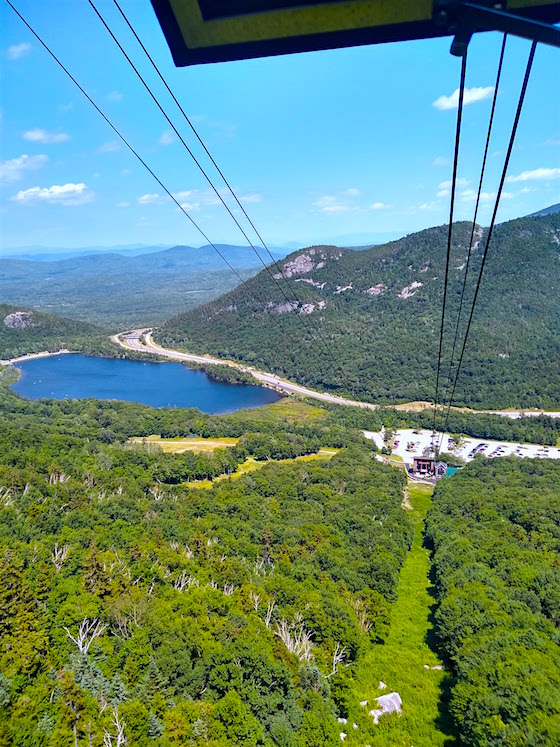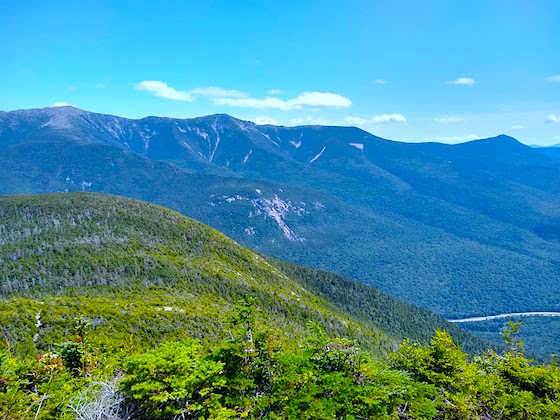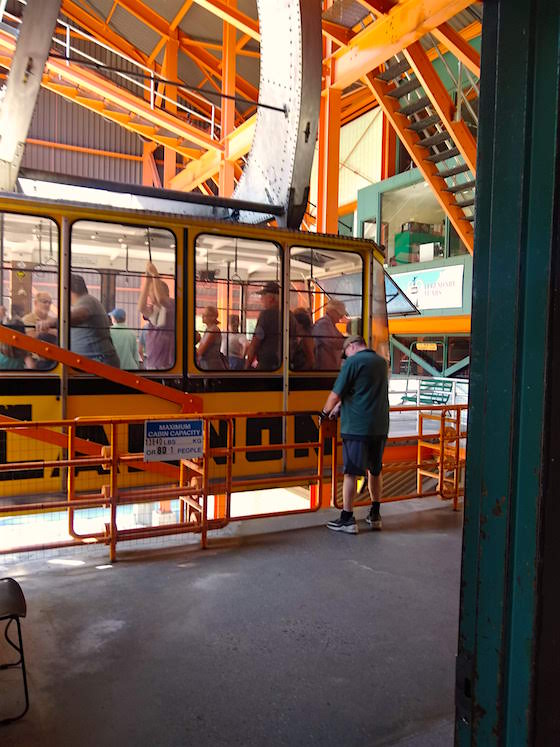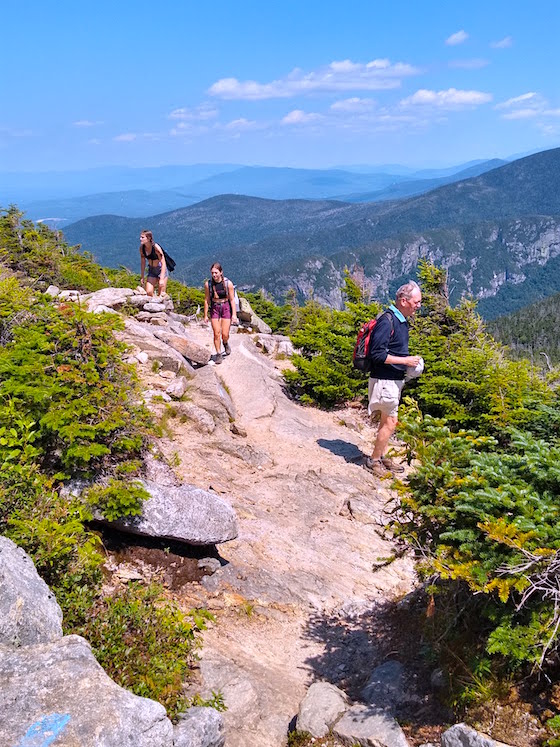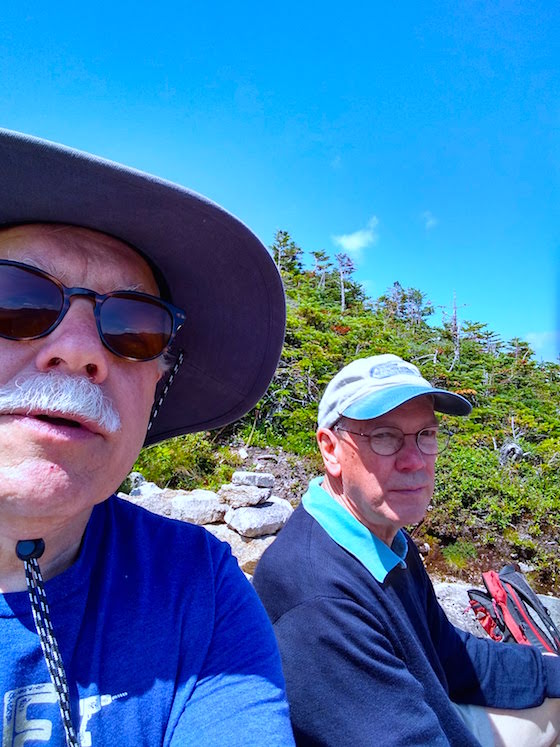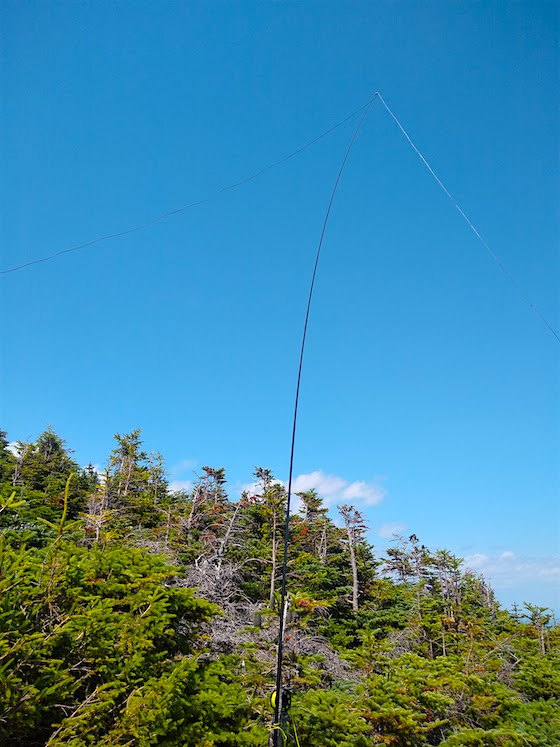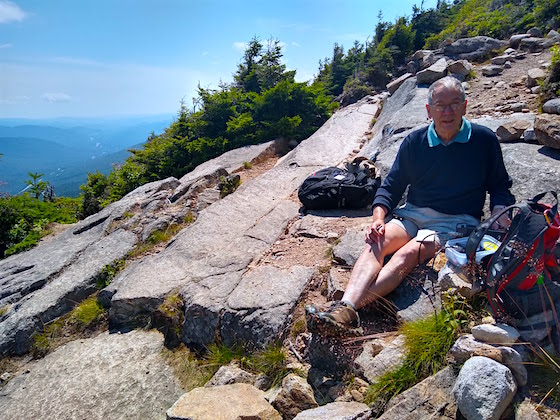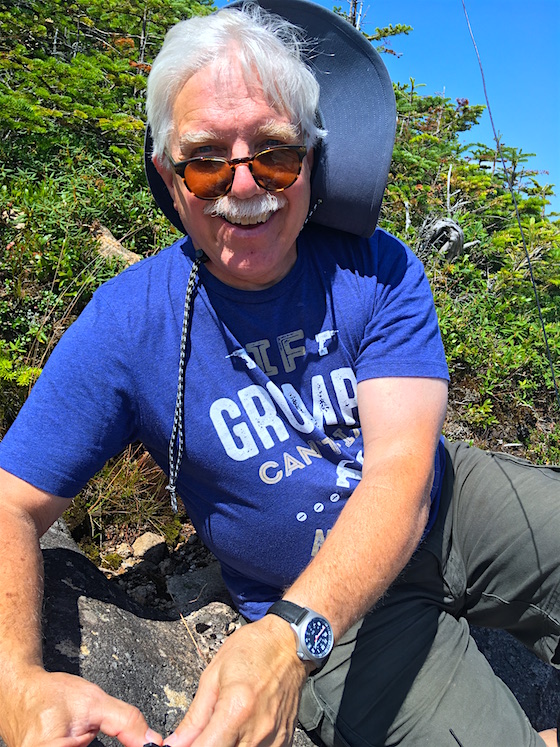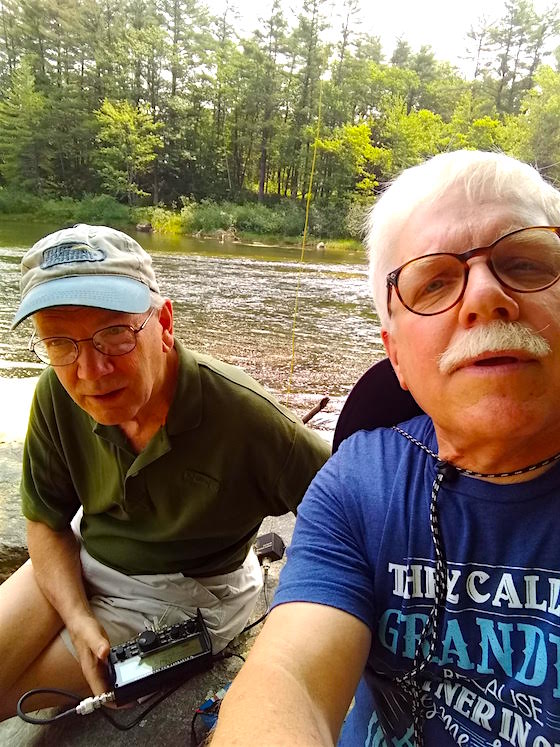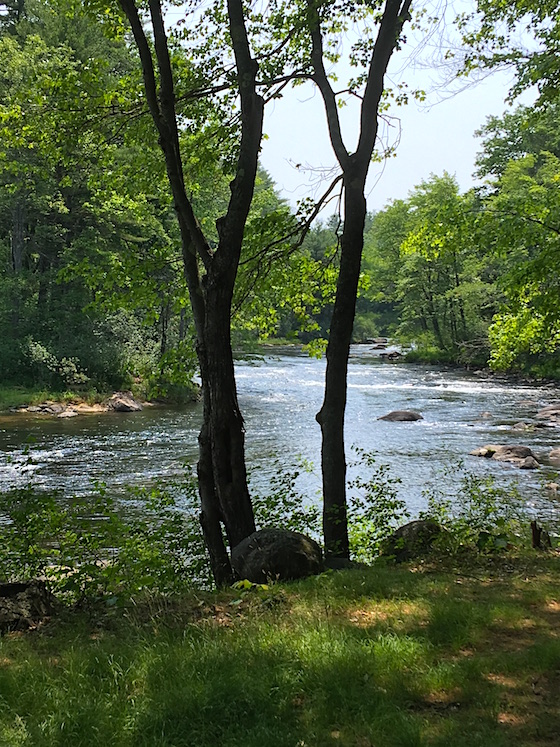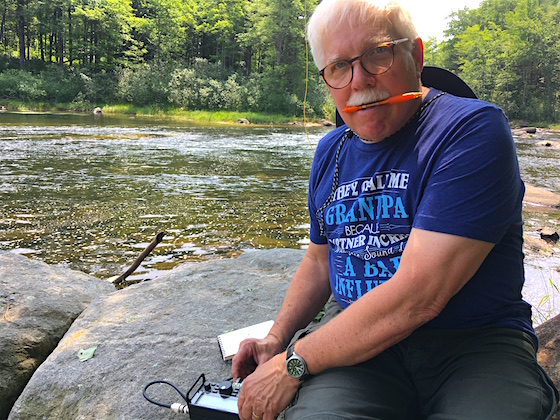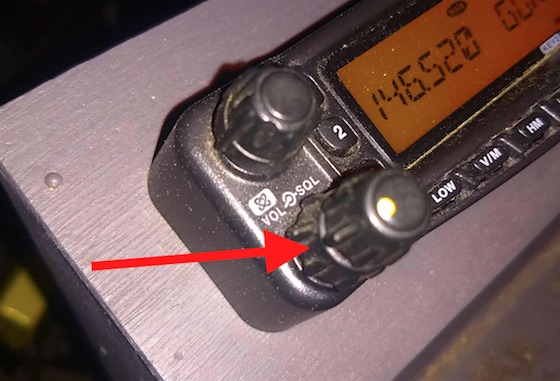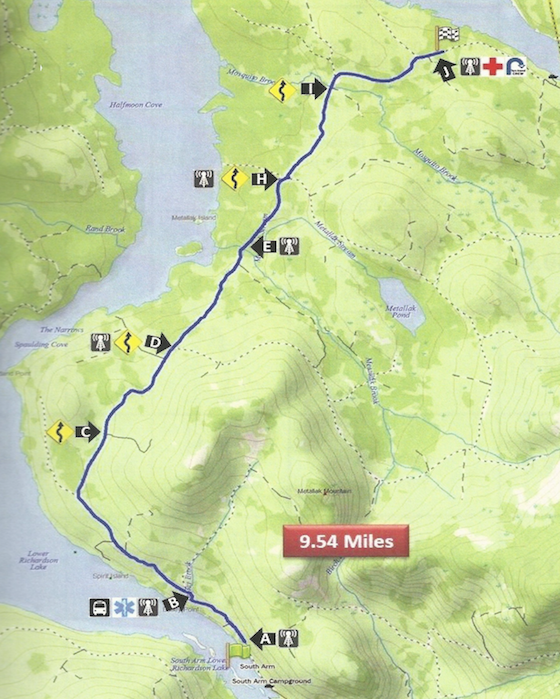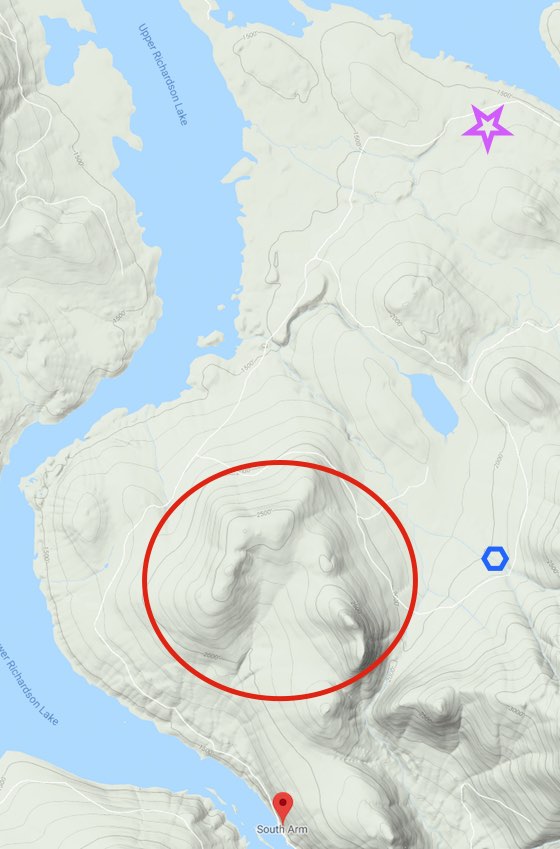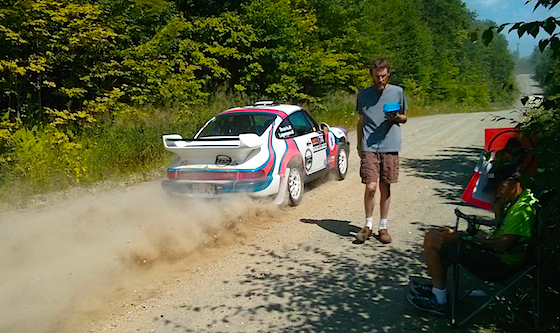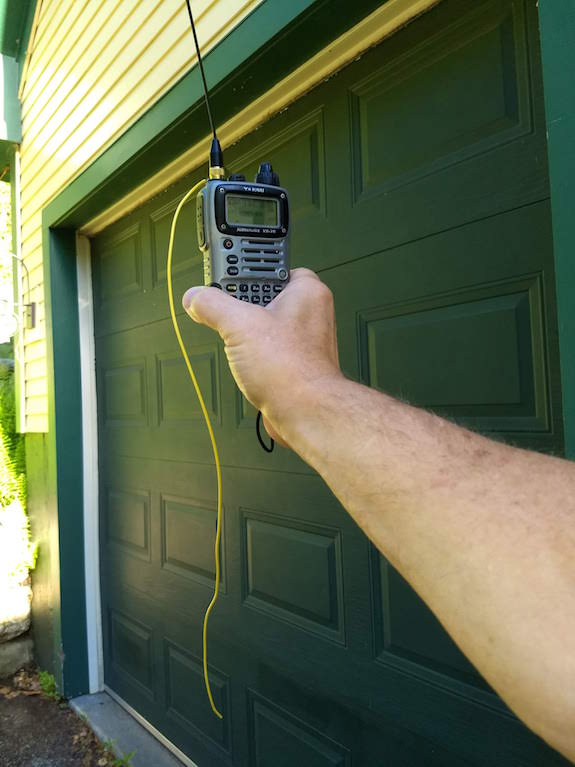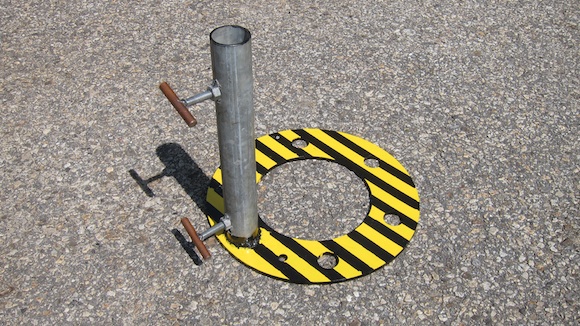Today was another grand summer day here in central New Hampshire. Jim Cluett, W1PID, and I went to one of our favorite hidden gems, the picnic tables next to the canoe and kayak launch ramp along the Pemigewasset River at Profile Falls. The locals call it the Pemi.
You can drive right up to the picnic tables from the main parking lot at Profile Falls, but Jim wanted to walk the quarter-mile from the parking lot to the picnic tables just above the bank of the Pemi. I arrived at the parking area about ten minutes before Jim and immediately became the smorgasbord for a swarm of junior mosquitos. They were the smallest I’d ever seen. Within seconds ten, or more, were feasting on my tasty neck, arm, and leg meat.
While waiting for Jim, I sprayed on my effective eucalyptus mosquito and tick repellent. I hate products containing DEET, and REPEL is the best product I’ve discovered so far.
Lunch Then Launch HF Signals
“I want to eat a picnic lunch along the Pemi. I’m sick of sitting on plastic chairs next to plastic tables or sitting at filthy tables outside restaurants with passing cars and trucks,” I informed Jim earlier in the morning when we hatched the Pemi plan.
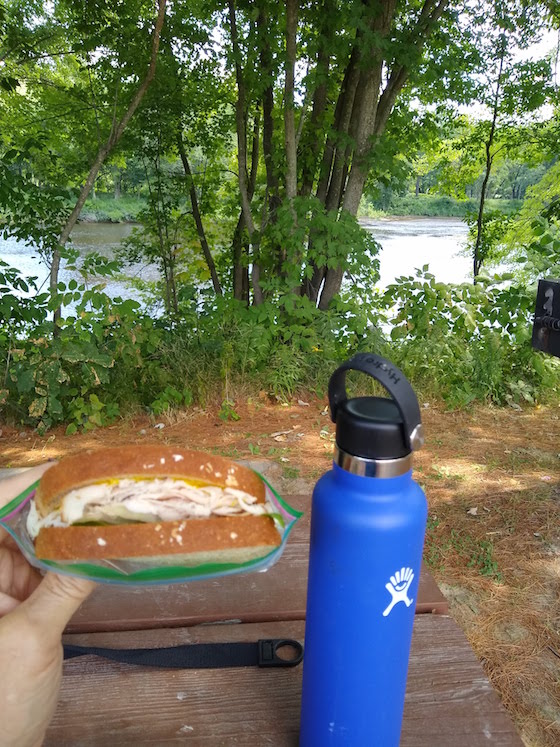
Here’s part of my lunch. Shaved fresh turkey breast, tantalizing Raye’s Sweet and Spicy Mustard, cheddar cheese and romaine lettuce on whole wheat. Jim’s a vegan. My 21 oz Hydro Flask water bottle keeps my water ice cold. It’s super durable and fits well in a side pocket of my backpack. Copyright 2019 Tim Carter W3ATB
I also brought a small bag of fresh cashews that Jim and I split. He devours them and I do the same as they’re so tasty. For dessert, I brought some vegan chocolate coconut macaroons. They were so delicious I wished I had another bag. Jim and I split these as well.
Wire Antenna Works Well
“Listen. What kind of antenna do you want to put up?” Jim is always filled with questions.
“I brought my 44-foot twisted-pair dipole, but let’s just go with a vertical 29-foot wire.” I’m about simplicity on some days. Erecting a dipole is twice the work as you need to put up two halyards and the tree branches need to be far apart.
A vertical wire is perfect for this location because the giant evergreen tree at the picnic table allows the wire to hang straight down to the table. The first throw of my water bottle worked even though it bounced around the branches like a polished ball inside a pinball machine. Two strangers watched us and were stunned a person could get a string 40 feet up into a tree in seconds.
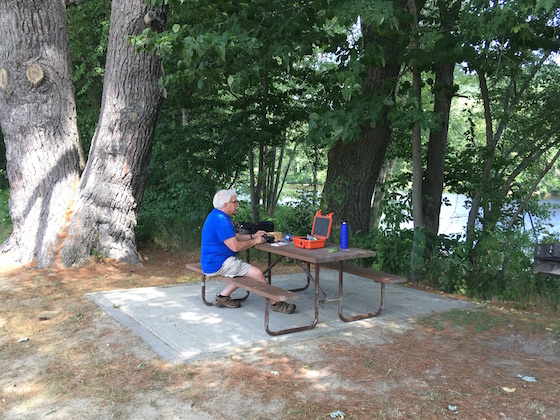
Here I am at one of the picnic tables. I’m concentrating on invisible electromagnetic waves that are being captured by the 29-foot wire hanging from the branches in the massive pine tree to my left. Copyright 2019 Jim Cluett W1PID
No Signals At First
As Jim put up the antenna using my halyard throw, I got out my Elecraft KX2 equipped with Elecraft iambic paddles. As usual, I power the radio with the lightweight Bioenno 12-volt 3Ah LFP battery.
The magic of HF outdoor radio and indoor radio for that matter is you don’t know what you’re going to discover once you power up. There could be scores of operators you hear or it can be as quiet as Badwater Basin in the middle of a winter’s night.
Once everything was connected I went to 20 meters and there were just one or two signals. I decided to let Jim use the radio first and his decades of experience paid off.
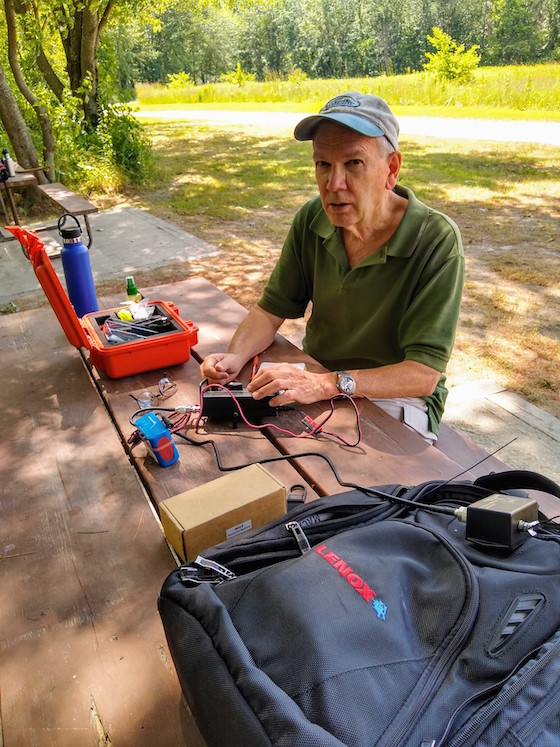
Here’s Jim focused and ready to add another QSO to the logbook. The strong breeze was keeping the midget mosquitos at bay. You can see the 9:1 unun in the black box on top of my backpack. This important component lowers the high impedance of the 29-foot wire. It’s all magic I tell ya’! My KX2 and all needed gear fit in that orange Pelican 1200 case. Copyright 2019 Tim Carter W3ATB
Soaking Up the Pemi’s Splendor
The Pemi cast a spell on me yesterday. I’ve been to this location quite a few times but only walked down the kayak and canoe launch ramp two other times. Today a siren song drew me once again to the bank as Jim was making contacts with the radio.
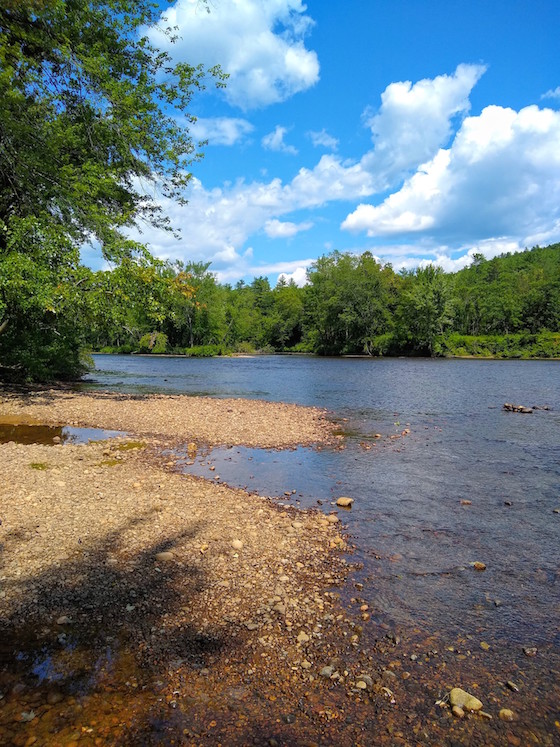
Yes, the Pemi is this beautiful. The water is crystal clear. Did you watch the video above? Copyright 2019 Tim Carter W3ATB
A few years back Jim and I put in his aluminum canoe at this very spot. I was thinking about that adventure and was happy the mosquitos were not biting me as they were that day.
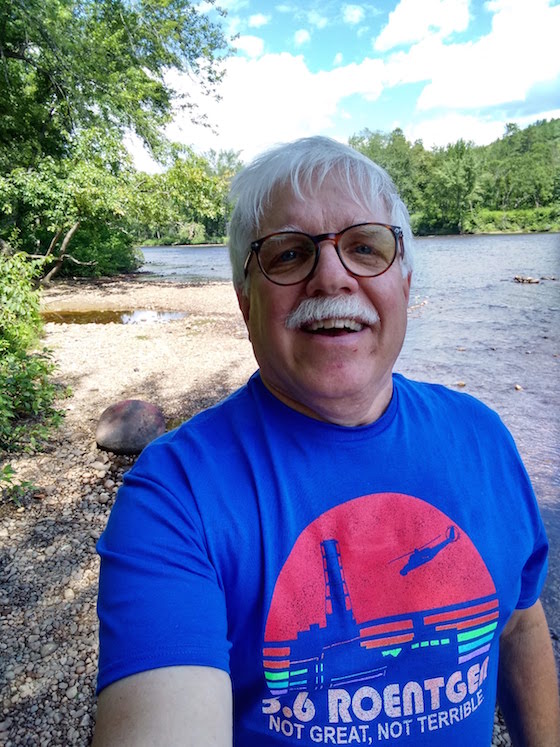
I’m happy as a clam in my new Chernobyl t-shirt. Granite is abundant in NH and no doubt there’s radiation, but I doubt I got 3.6 roentgen worth of exposure today! If you want great photos that show the true shape of your face, you need to use an 85mm lens, not the wide-angle BS lens smartphone cameras have! Copyright 2019 Tim Carter W3ATB
Signals A Plenty!
Somehow ninety minutes had already passed by. How did that happen?
In the meantime, the 20-meter band had come alive. The logbook was starting to be awash in ink.
We worked Ric, KA3LOC in Kansas along with K9FW, Al in Indiana. But as sometimes happens, we heard stations but they could not hear our low-powered 10-watt signal. We usually operate with just 5 watts of power, but with solar conditions being what they are, we need as much power as the KX2 will muster so other stations hear us.
Here’s who we heard, but couldn’t make contact with:
- W6JL
- DL4NAC
- LZ1NK
- W26Y
- KX9DX
- LZ1MS
Lou on Long Island
Jim surrendered the radio to me and I worked Lou, N2JPR, on Long Island after hearing him call CQ. Little did I know it but Lou was recording our conversation and was kind enough to send it to me via email. The wonders of technology!
He said in his email, “Thanks for the nice QSO today! Conditions were good and you had a nice signal here to central Long Island. Thanks for answering my CQ call. Surprisingly, minimal QSB and QRN allowed solid copy. Your Pemi River hiking portable setup sounded good. Please find the MP3 recording attached of our QSO. You can hear your signal and what conditions were like on my side. Your fist was easy, armchair copy. No need to reply QSL. According to my log, this was our first QSO.”
Bert Once More, Well Maybe
After signing off with Lou, Jim took over the radio again. It didn’t take long to find an old friend.
“Hey, that’s Bert!” I blurted out hearing his familiar call sign, F6HKA.
Jim and I routinely work Bert who’s six hours ahead of us in his house in France. Bert was in an extended conversation with another operator and we could only hear Bert’s Morse code.
“I wonder how long this is going to take?” Jim has many positive qualities and his unending patience is one.
Wanting to put another DX contact in the logbook I uttered, “Oh, not to worry. Bert would walk over hot coals to work us. He just needs to know we’re here.”
It was not to be. We called Bert after he ended his conversation with the mystery operator, but he didn’t hear us.
Time To Go
After failing to contact Bert, we decided it was time to go. We had been there almost two and one-half hours but it seemed more like thirty minutes to me.
In just nine weeks all the trees along the Pemi will be ablaze with color. Reds, oranges, yellows, crimson all offset by the evergreens. The color so brilliant you think it’s fake.
How lucky I am to live where Mother Nature has some of her best work on display. Come visit. You can hold the sign Jim and I display for strangers to keep them safe that says:
! DANGER !
High-Frequency Radio Radiation
Loitering May Be Dangerous to Your Health
Keep Moving
Do NOT Stare at Equipment or Antenna
For those inquisitive and doubtful visitors that ask why we’re not affected by the radio waves, we always answer that we’re wearing lead underwear. I carry a small piece of sheet lead in my Pelican case to show them. Seriously.

